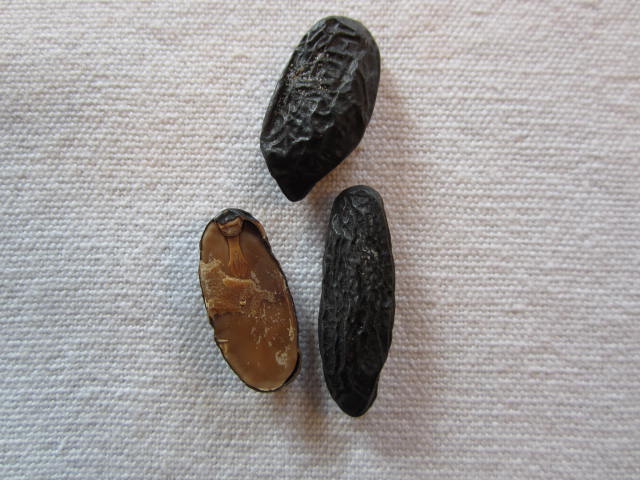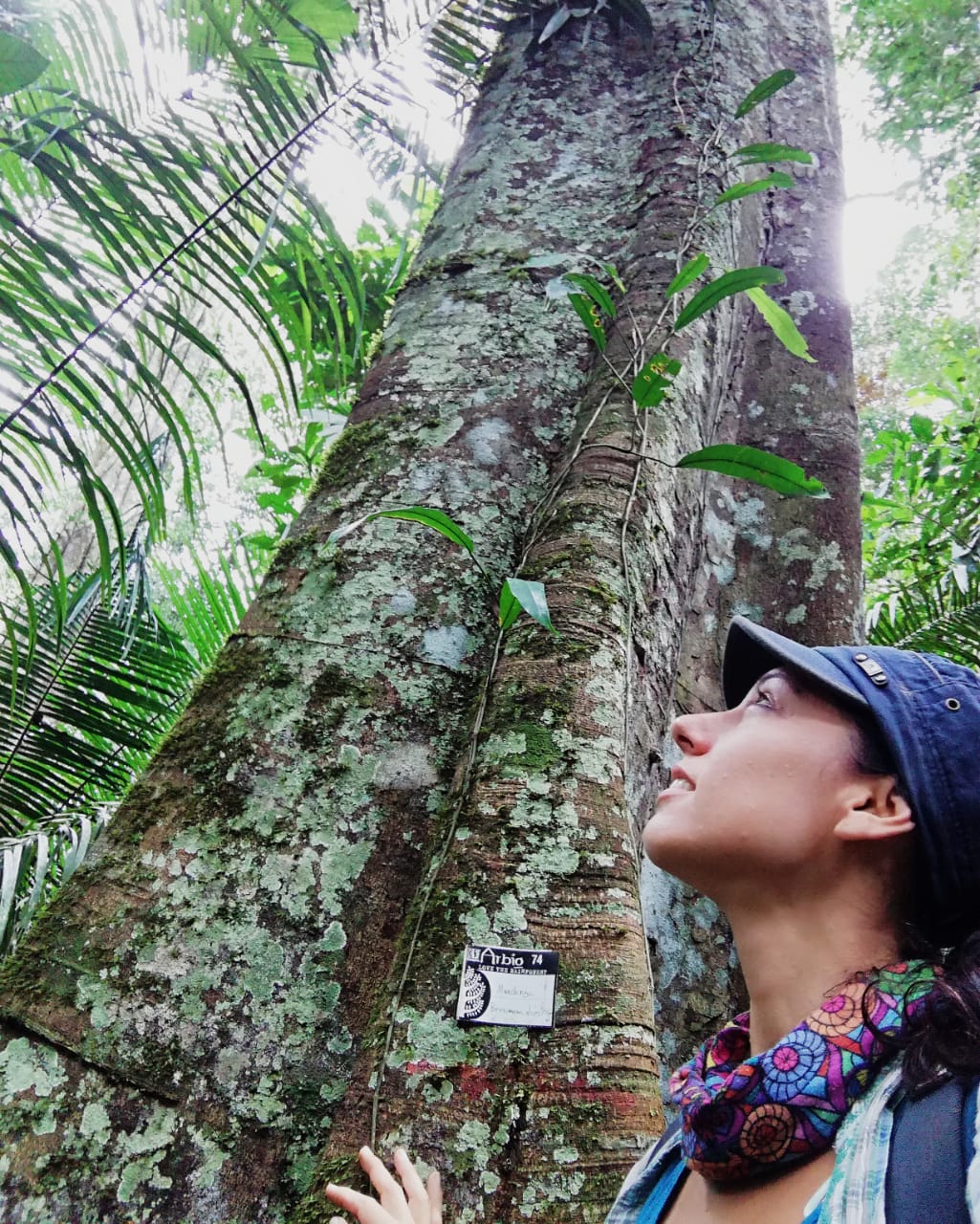|
Dipteryx Charapilla
''Dipteryx charapilla'' is a little-known species of flowering plant in the family Fabaceae, a large to mid-sized tree growing along rivers in the rainforests of Brazil. and Peru. Description Habitus This plant is a relatively tall tree, 20-30m tall, with a trunk to 65 cm in diameter. The bark is covered in lenticels and coloured cream to grey in adults, but greenish in juvenile specimens, with cork scars distributed in depressed, isolated patches (as if the trunk was hammered). The ends of the twigs are also covered in lenticels. Leaves It has alternate compound leaves which are imparipinnate (with a lone terminal leaflet rather than a terminal pair of leaflets) and arranged spirally; the leaves having (2-) 3-4 pairs of leaflets distanced 3–6 cm apart from each other. The leaflets are shaped elliptic-ovalate and are alternate at the base of the leaf ( alternipinnate). The leaflets have a rounded base, a cuspidate (pointy) apex, and have a length of 8.9-21.3 cm ... [...More Info...] [...Related Items...] OR: [Wikipedia] [Google] [Baidu] |
James Francis Macbride
James Francis Macbride (19 May 1892 16 June 1976) was an American botanist who devoted most of his professional life to the study of the flora of Peru. Early life and education Born on 19 May 1892 in Rock Valley, Iowa, Macbride graduated from the University of Wyoming in 1914 and worked briefly at the Gray Herbarium, Harvard University. Career In 1921, Macbride joined the staff of the Department of Botany at Field Museum of Natural History, Chicago, to head the nascent Flora of Peru program. Peru had been selected as the center of floristic research by C. F. Millspaugh, the Museum's first Curator of Botany. In 1922, Macbride and his assistant William Featherstone embarked on the first of two expeditions to Peru. They initially collected in the highland regions of the Departments of Lima, Junín, Huánuco, and Pasco. Macbride returned the following year to the Huánuco region and the Río Ucayali. For a decade from 1929, Macbride visited all the major herbaria of Europe to ph ... [...More Info...] [...Related Items...] OR: [Wikipedia] [Google] [Baidu] |
Faboideae
The Faboideae are a subfamily of the flowering plant family Fabaceae or Leguminosae. An acceptable alternative name for the subfamily is Papilionoideae, or Papilionaceae when this group of plants is treated as a family. This subfamily is widely distributed, and members are adapted to a wide variety of environments. Faboideae may be trees, shrubs, or herbaceous plants. Members include the pea, the sweet pea, the laburnum, and other legumes. The pea-shaped flowers are characteristic of the Faboideae subfamily and root nodulation is very common. Genera The type genus, ''Faba'', is a synonym of ''Vicia'', and is listed here as ''Vicia''. *''Abrus'' *''Acmispon'' *''Acosmium'' *'' Adenocarpus'' *'' Adenodolichos'' *'' Adesmia'' *'' Aenictophyton'' *''Aeschynomene'' *'' Afgekia'' *''Aganope'' *'' Airyantha'' *''Aldina'' *''Alexa'' *''Alhagi'' *'' Alistilus'' *'' Almaleea'' *'' Alysicarpus'' *'' Amburana'' *''Amicia'' *'' Ammodendron'' *'' Ammopiptanthus'' *'' Ammothamnus'' *'' ... [...More Info...] [...Related Items...] OR: [Wikipedia] [Google] [Baidu] |
Quechua Language
Quechua (, ; ), usually called ("people's language") in Quechuan languages, is an Indigenous languages of the Americas, indigenous language family spoken by the Quechua peoples, primarily living in the Peruvian Andes. Derived from a common ancestral language, it is the most widely spoken Pre-Columbian era, pre-Columbian language family of the Americas, with an estimated 8–10 million speakers as of 2004.Adelaar 2004, pp. 167–168, 255. Approximately 25% (7.7 million) of Peruvians speak a Quechuan language. It is perhaps most widely known for being the main language family of the Inca Empire. The Spanish encouraged its use until the Peruvian War of Independence, Peruvian struggle for independence of the 1780s. As a result, Quechua variants are still widely spoken today, being the co-official language of many regions and the second most spoken language family in Peru. History Quechua had already expanded across wide ranges of the central Andes long before the expansion of the ... [...More Info...] [...Related Items...] OR: [Wikipedia] [Google] [Baidu] |
Loreto Region
Loreto () is Peru's northernmost department and region. Covering almost one-third of Peru's territory, Loreto is by far the nation's largest department; it is also one of the most sparsely populated regions due to its remote location in the Amazon Rainforest. Its capital is Iquitos. Geography * Northwest: Ecuador: Sucumbíos Province, Orellana Province, Pastaza Province and Morona-Santiago Province * North: Colombia: Putumayo Department * Northeast: Colombia: Amazonas Department * East: Brazil: Amazonas State and Acre State * South: Ucayali and Huánuco regions * West: San Martín and Amazonas regions Loreto's large territory comprises parts of the High and Low Jungle, and is largely covered with thick vegetation. This territory has wide river flood plains, which are covered with rainwater and usually are swamped in summer. In these flood areas there are elevated sectors called ''restingas'', which always remain above water, even in times of the greatest swellings. There a ... [...More Info...] [...Related Items...] OR: [Wikipedia] [Google] [Baidu] |
Maynas Province, Peru
Maynas is one of the eight provinces in the Loreto Region in northeastern Peru. Its capital, Iquitos, is also Loreto's regional capital and the largest city in the Peruvian Amazon Rainforest. History A decree signed on 26 April 1822 signed by the Marquis of Torre Tagle, transformed what once was the General Command of Maynas into the Quijos Department, allowing it to also choose deputies. In 1925, Maynas was integrated into the Department of La Oroya. In 1822, Joaquín Mosquera travelled on behalf of Colombia to request the restitution of the province. On July 25, 1824, the Congress of Gran Colombia issued a law of territorial division intending to include the Canton of Quijos in the Pichincha Province of the Department of Quito, according to the limits it had at the time of creation as the Viceroyalty of New Granada. It also intended to incorporate the Provinces of Jaén, Matamoros and Maynas into the Department of Azuay. The Peruvian refusal to give up the territories e ... [...More Info...] [...Related Items...] OR: [Wikipedia] [Google] [Baidu] |
Mazán District
Mazán District is one of thirteen districts of the Maynas Province in Peru. Instituto Nacional de Estadística e Informática The Instituto Nacional de Estadística e Informática (INEI) ("National Institute of Statistics and Informatics") is a semi-autonomous Peruvian government agency which coordinates, compiles, and evaluates statistical information for the country .... Banco de Información Distrital''. Retrieved April 11, 2008. References Districts of the Maynas Province Districts of the Loreto Region {{Loreto-geo-stub ... [...More Info...] [...Related Items...] OR: [Wikipedia] [Google] [Baidu] |
Holotype
A holotype is a single physical example (or illustration) of an organism, known to have been used when the species (or lower-ranked taxon) was formally described. It is either the single such physical example (or illustration) or one of several examples, but explicitly designated as the holotype. Under the International Code of Zoological Nomenclature (ICZN), a holotype is one of several kinds of name-bearing types. In the International Code of Nomenclature for algae, fungi, and plants (ICN) and ICZN, the definitions of types are similar in intent but not identical in terminology or underlying concept. For example, the holotype for the butterfly '' Plebejus idas longinus'' is a preserved specimen of that subspecies, held by the Museum of Comparative Zoology at Harvard University. In botany, an isotype is a duplicate of the holotype, where holotype and isotypes are often pieces from the same individual plant or samples from the same gathering. A holotype is not necessarily "typ ... [...More Info...] [...Related Items...] OR: [Wikipedia] [Google] [Baidu] |
Dipteryx Rosea
''Dipteryx'' is a genus containing a number of species of large trees and possibly shrubs. It belongs to the "papilionoid" subfamily – Faboideae – of the family Fabaceae. This genus is native to South and Central America and the Caribbean. Formerly, the related genus ''Taralea'' was included in ''Dipteryx''. Description The largest members of ''Dipteryx'' are canopy-emergent trees of tropical rainforests. The tonka bean (''D. odorata'') is grown for its fragrant seeds. ''Baru'' (''D. alata'') is the only species which found in drier, seasonal areas, growing in the cerrado of Brazil; its fruit and seeds are used as food and fodder. Several species are used for timber, of which almendro (''D. oleifera'') wood is considered desirable, especially locally. ''Dipteryx'' can be distinguished from other members of the Dipterygeae by its compound leaves with asymmetric leaflets caused due to an eccentric primary vein, a drupaceous fruit, seeds with a leathery skin, a ... [...More Info...] [...Related Items...] OR: [Wikipedia] [Google] [Baidu] |
Dipteryx Odorata
''Dipteryx odorata'' (commonly known as "cumaru", "kumaru", or "Brazilian teak") is a species of flowering tree in the pea family, Fabaceae. The tree is native to Central America and northern South America and is semi-deciduous. Its seeds are known as tonka beans (sometimes tonkin beans or tonquin beans). They are black and wrinkled and have a smooth, brown interior. They have a strong fragrance similar to sweet woodruff due to their high content of coumarin. The word ''tonka'' is taken from the Galibi (Carib) tongue spoken by natives of French Guiana; it also appears in Tupi, another language of the same region, as the name of the tree. The old genus name, ''Coumarouna'', was formed from another Tupi name for tree, ''kumarú''. Many anticoagulant prescription drugs, such as warfarin, are based on 4-hydroxycoumarin, a chemical derivative of coumarin initially isolated from this bean. Coumarin, however, does not have anticoagulant properties. Biology of the tree The tree grow ... [...More Info...] [...Related Items...] OR: [Wikipedia] [Google] [Baidu] |
Dipteryx Micrantha
''Dipteryx micrantha'' is a tropical flowering plant, a giant tree in the Faboideae subfamily of the bean family Fabaceae. It is a dominant emergent tree in parts of the rainforests of Bolivia, Brazil, Colombia, Ecuador and Peru. In the international timber market, this species is traded under the name ''cumaru''. It furnishes a dense, hard, beautiful reddish timber which has become a popular import in the 2010s for use in parquet. The ornamental bunches of lilac pink flowers high in the canopy eventually develop into a mass of large fruit pods, which are an important food for many native animals during the dry season. The fruit contains a single oily seed which is edible, although these seeds are not exploited as a commercial product. Vernacular names In northeastern Peru, a local common name which has been recorded for this plant since its discovery by Western scientists is ''charapilla''. This name is shared with '' Dipteryx charapilla''. The word ''charapilla'' is a dimin ... [...More Info...] [...Related Items...] OR: [Wikipedia] [Google] [Baidu] |
Dipteryx Ferrae
''Dipteryx'' is a genus containing a number of species of large trees and possibly shrubs. It belongs to the "papilionoid" subfamily – Faboideae – of the family Fabaceae. This genus is native to South and Central America and the Caribbean. Formerly, the related genus ''Taralea'' was included in ''Dipteryx''. Description The largest members of ''Dipteryx'' are canopy-emergent trees of tropical rainforests. The tonka bean (''D. odorata'') is grown for its fragrant seeds. ''Baru'' (''D. alata'') is the only species which found in drier, seasonal areas, growing in the cerrado of Brazil; its fruit and seeds are used as food and fodder. Several species are used for timber, of which almendro (''D. oleifera'') wood is considered desirable, especially locally. ''Dipteryx'' can be distinguished from other members of the Dipterygeae by its compound leaves with asymmetric leaflets caused due to an eccentric primary vein, a drupaceous fruit, seeds with a leathery skin, a ... [...More Info...] [...Related Items...] OR: [Wikipedia] [Google] [Baidu] |
.png)

